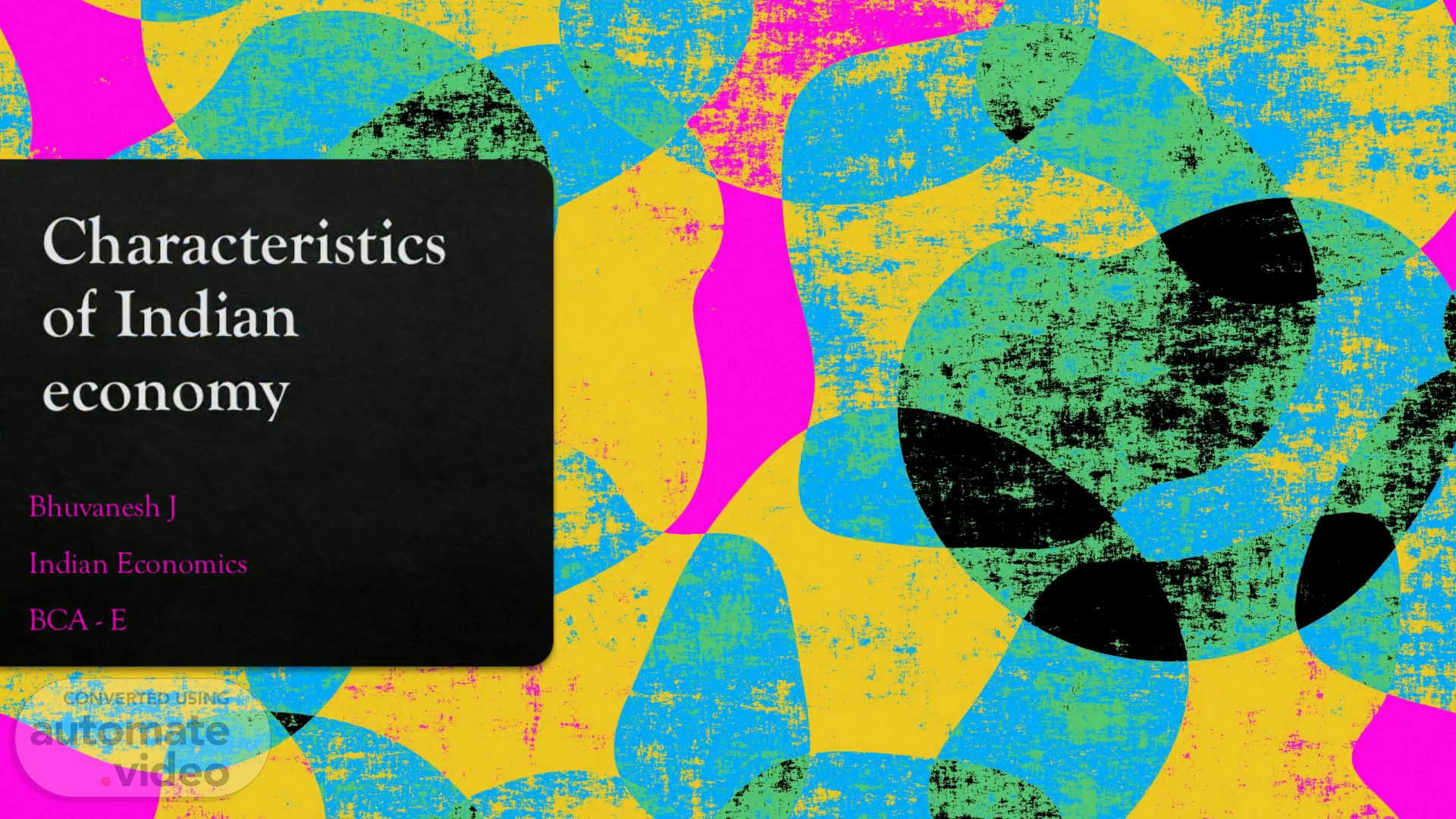
Page 1 (0s)
Characteristics of Indian economy. Bhuvanesh J Indian Economics BCA - E.
Page 2 (7s)
INDIAN ECONOMY. . Indian Economy is a Combination of two words: “Indian” refers to those concerning India. “Economy” refers to all those activity & arrangements which the citizens of a country, either individually or collectively, undertake to satisfy their wants of food, clothing, shelter etc. The economy of India is a middle income developing market economy . It is the world's fifth-largest economy by nominal GDP and the third-largest by purchasing power parity (PPP).
Page 3 (39s)
Characteristics of Indian Economy. In order to understand the Indian Economic landscape, it is important to make note of some of the basic characteristics of India as a developing economy. These are as follows: Low Per Capita Income (PCI) High Rate of Population Growth Unemployment High Dependence on the Primary Sector Unequal wealth distribution Lack of Infrastructure.
Page 4 (59s)
Low Per Capita Income (PCI). The per capita income of a geographical location (say, a country, state, city, or others) measures the amount of money earned by every person in that area. It determines the average income of a person in a country, a state, or a specific region. This helps us evaluate the standard of livelihood and the quality of life of people in the geographical location. Per Capita Income is Calculated using the below formula: PCI = Population’s total income / Population of a specific area.
Page 5 (1m 25s)
High Rate of Population Growth. Where there is a high populace, There additionally must be a framework set up to help that populace. This implies there should be sufficient instructive, educational, and clinical offices, enough business openings or employment opportunities with great compensations, and so forth. With a high populace, particularly an undeniably high populace, giving these facilities to every resident turns into an immense undertaking, and frequently, state-run administrations or the government can’t carry on with it; in this manner, it leaves the economy in the developing stage..
Page 6 (1m 53s)
Unemployment. Indian industries do not have sufficient capital to expand the production facilities and absorb the exponentially increasing labour force. In rural areas, a lot of people depend on agriculture, and in urban areas, an educated workforce is facing a shortage of job opportunities..
Page 7 (2m 10s)
High Dependence on the Primary Sector. In developed countries, only 1–5 % of the population is active in the primary sector as compared to the 58% population in India which contributes to only one-fifth of GDP. Lack of advanced technology and proper planning has put the agriculture sector in India under tremendous pressure..
Page 8 (2m 30s)
Unequal wealth distribution. In India, the top 4% of households hold 31% of total assets. This concentration of wealth causes maldistribution of income in rural areas. Income inequality is how unevenly income is distributed throughout a population. The less equal the distribution, the higher income inequality is. Income inequality is often accompanied by wealth inequality, which is the uneven distribution of wealth..
Page 9 (2m 51s)
Lack of Infrastructure. India has yet to build proper infrastructure in transport, communication, banking, energy, health, and education. The lack of proper infrastructure is the reason that huge natural resources in the country are underutilised. While India is the fourth largest economy in the world, a key Wealth factor obstructing its growth and development is the lack of world class infrastructure. Estimates suggest that this lack of adequate infrastructure reduces India's GDP growth by 1-2 per cent every year..
Page 10 (3m 17s)
Thumbs Up Sign. Thanks for viewing.